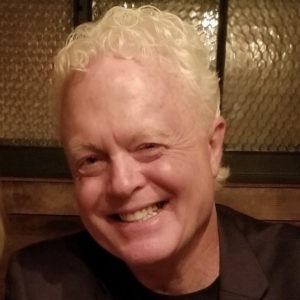‘Nonprofit difference’ in danger, LeadingAge board chair says
LeadingAge and its nonprofit members have meant "the difference between Bedford Falls and Pottersville" to the aging services industry, LeadingAge Board Chair David Gehm told annual meeting attendees at Tuesday's general session. He was calling to mind the beloved holiday film "It's a Wonderful Life," in which an angel shows George Bailey how his efforts saved his beloved town of Bedford Falls from the bad influences of banker Henry Potter. For a wonderful future together, however, Gehm added, members must work together to confront the challenges facing providers.
 "Our advocacy agenda is driven, as it always has been, by advocating for the right policies for the right reasons, not just based on money solving everything," said Gehm, president and CEO of Wellspring Lutheran Services of Michigan. "In fact, our Pathways report, which continues to gain momentum, has captured the attention and imagination of smart people across many sectors, who now agree with us that we need a comprehensive system, based on sound policy, to pay for long term services and supports in America."
"Our advocacy agenda is driven, as it always has been, by advocating for the right policies for the right reasons, not just based on money solving everything," said Gehm, president and CEO of Wellspring Lutheran Services of Michigan. "In fact, our Pathways report, which continues to gain momentum, has captured the attention and imagination of smart people across many sectors, who now agree with us that we need a comprehensive system, based on sound policy, to pay for long term services and supports in America."A Pottersville-like aging services field, he said, would prioritize return on investment in a system of services that many would struggle to access and could impoverish the next generation by doing so. Also, Gehm added, it would lack research leading to best practices, leaving operators with margin and regulatory compliance as the only metrics by which to measure success. And the system would lack advocates for elder-centric care delivery, charitable care, social impact and innovative new practices, he said.
"A quick look at other voices in this space of aging reveals a distinct difference in what we bring to the dialogue: successful, mission-driven providers who have innovated, time and again, to better serve our communities, with altruistic motives grounded in changeless core values, with profit being a motive only…to fund more mission," Gehm said. "That's high moral ground that no one else can hold."
But Bedford Falls faces a shaky path ahead "if nonprofits fail to adapt, change, innovate and serve more and more people," he added. "While I remain optimistic about our future, I must also admit that my travels this last year have exposed me to various trends in the marketplace that might give us pause as we think about our future."
One worrisome trend, Gehm said, finds members downsizing the number of skilled beds they offer, often through the sale of a facility, to reposition themselves. "I don't raise this to call out this strategy as illegitimate," he said. "I raise it because that trend line carried forward predicts an ever-shrinking market share in this core service, with for-profits buying our beds almost as fast as we put them on the market."
Another troubling trend, Gehm said, is that, at the same time that nonprofits struggle to access capital at an affordable cost, for-profit companies continue to build housing and assisted living communities. "Market research provided by our friends at Ziegler notes that for-profit growth is outpacing nonprofit growth in senior housing at nearly eight times growth rate," he added.
But the top challenge facing members, Gehm said, relates to workplace issues. "Competition for excellent staff is growing at every level of our organizations, and this, coupled with weakening financial positions for some, predicts a downward cycle if not addressed," he said.
Gehm called on members to find new and innovative ways to support other members challenged by the current business climate. "This is a moment for us to celebrate our success, recognizing our strong voice is shaping the aging experience in America," he said. "It's also a moment for us to redouble our commitment to ensuring that the nonprofit difference, and our members who demonstrate that difference, continues long into the future."
I Advance Senior Care is the industry-leading source for practical, in-depth, business-building, and resident care information for owners, executives, administrators, and directors of nursing at assisted living communities, skilled nursing facilities, post-acute facilities, and continuing care retirement communities. The I Advance Senior Care editorial team and industry experts provide market analysis, strategic direction, policy commentary, clinical best-practices, business management, and technology breakthroughs.
I Advance Senior Care is part of the Institute for the Advancement of Senior Care and published by Plain-English Health Care.
Related Articles
Topics: Advocacy , Articles , Executive Leadership









